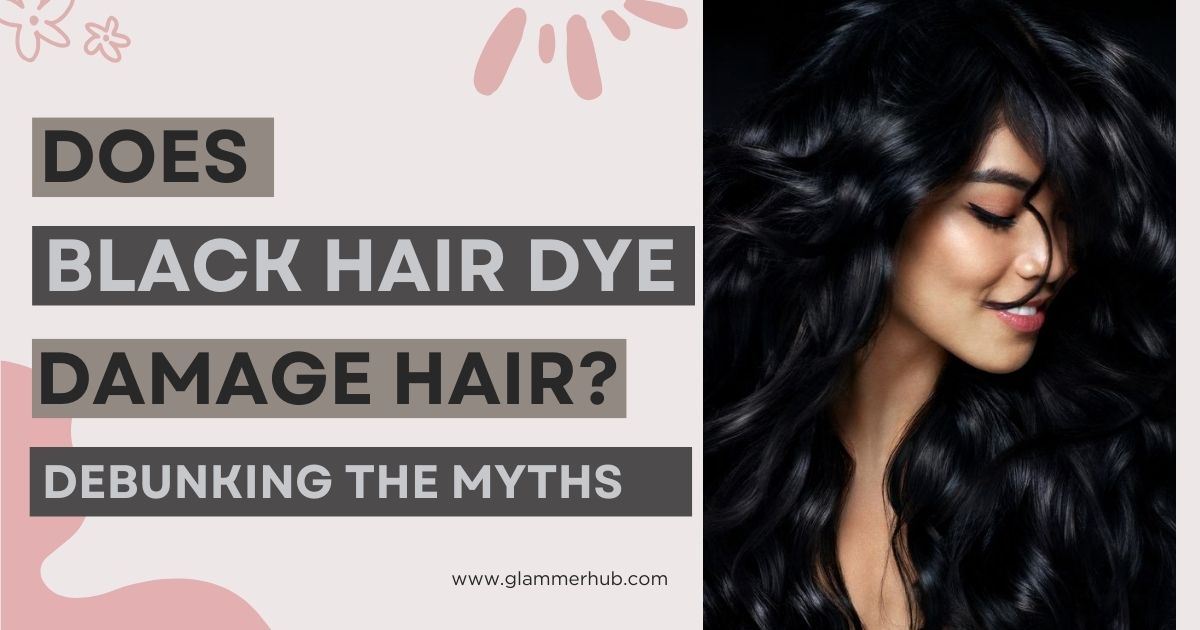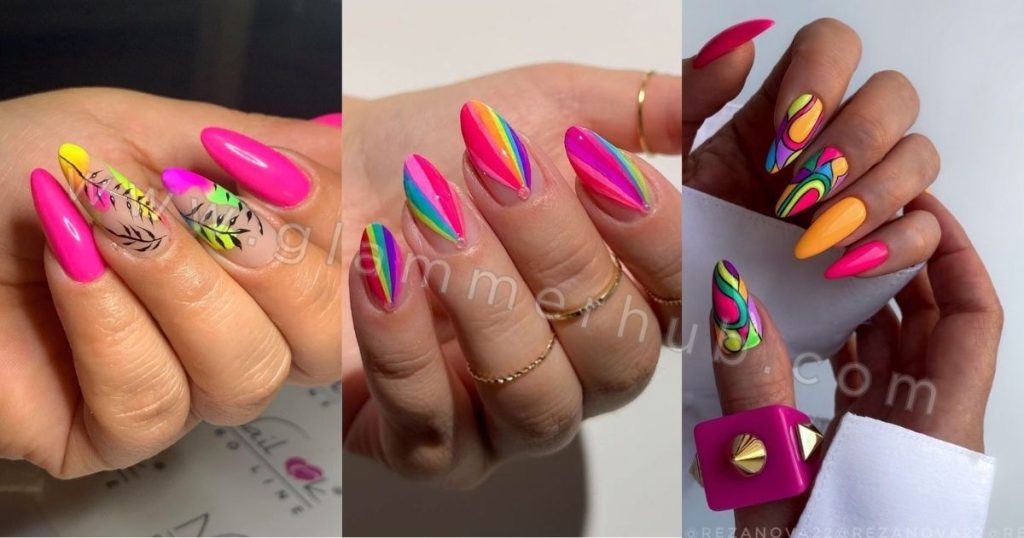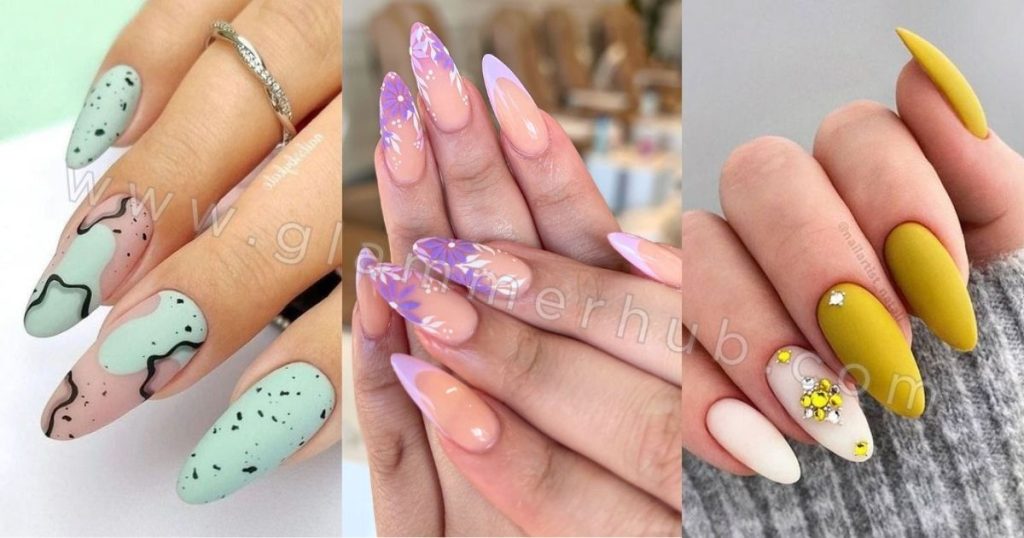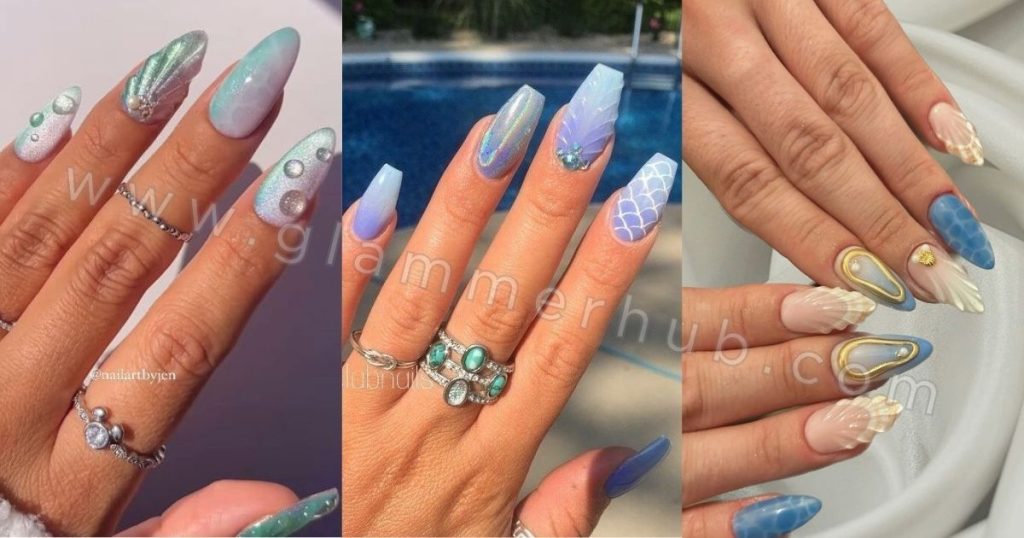Hair colouring has been a popular practice for centuries, with people embracing various shades to express their individuality or to conceal greying locks. Black dye is a bold and striking choice among the myriad hair colours. However, does black hair dye damage hair? And has been a subject of debate and concern for many individuals.
In this comprehensive article, we aim to unveil the truth behind the potential risks associated with dyeing hair black and provide valuable insights to help you make informed decisions.
Dispelling Myths & Facts on Hair Damage
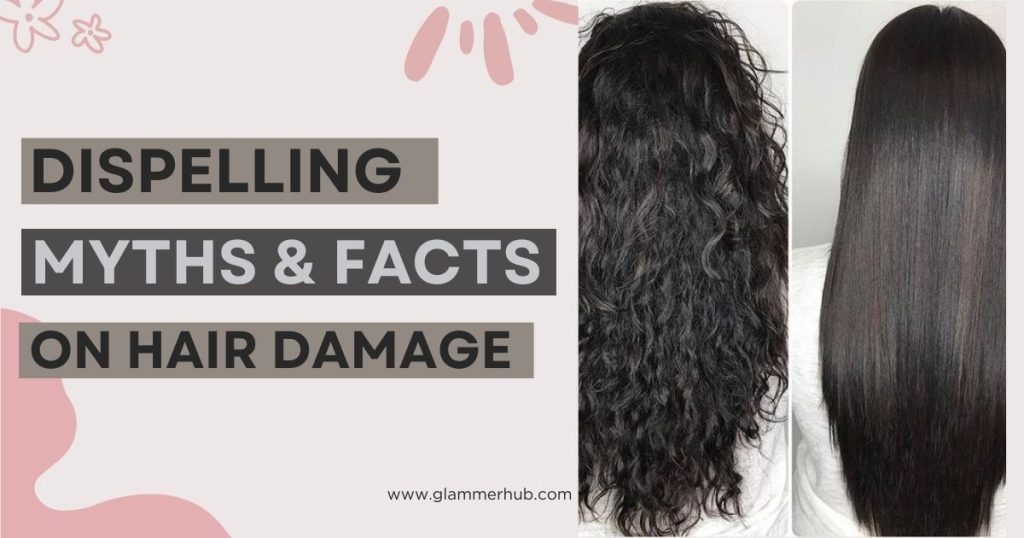
Before delving into the intricacies of hair damage, it’s essential to understand the science behind hair dye and its effects on hair health.
Understanding the Science Behind Hair Dye and its Effects on Hair Health
Hair dye penetrates the hair shaft, depositing colour molecules within the cortex, the innermost layer of the hair strand. This process can cause various chemical and physical changes to the hair structure, potentially leading to damage.
The Dyeing Process Explained:
- The hair cuticle (outer layer) is opened using alkaline chemicals, allowing the dye molecules to enter the cortex.
- The dye molecules bind to the proteins (keratin) within the cortex, depositing the desired colour.
- The cuticle is then closed, sealing the colour inside the hair shaft.
While this process is necessary for hair colouring, it can also weaken the hair’s structural integrity, leading to potential damage.
Influence on Hair Structure
Black hair dye, in particular, contains more potent and concentrated dye molecules than lighter shades. These molecules can be harsher on the hair, causing more significant damage. Additionally, achieving a deep, rich black shade often involves multiple applications or stronger developer solutions, further amplifying the potential for harm.
Factors that contribute to hair damage from black dye include:
- Porosity: Dyeing porous or damaged hair can exacerbate existing issues, leading to further breakage and dryness.
- Chemical Composition: Certain chemicals used in black hair dyes, such as ammonia and peroxide, can cause oxidative stress and weaken the hair’s protein structure.
- Frequency of Dyeing: Frequent touch-ups or root applications can compound the damage over time.
Myths Truth About Hair Damage
Despite the potential risks, it’s essential to separate fact from fiction. Not all black hair dyes are created equal, and not all individuals will experience the same level of damage. Factors like hair type, condition, and the specific dye formula can significantly influence the outcome.
Common Myths and Misconceptions:
Myth: Black hair dye always causes severe, irreversible damage.
Fact: Proper precautions and high-quality dye can minimize the risk of damage.
Myth: Hair damage from black dye is inevitable, regardless of hair type or condition.
Fact: Healthy, undamaged hair is more resilient and can withstand the dyeing process better.
Myth: Natural or ammonia-free dyes are completely safe for hair.
Fact: While gentler, these dyes can still cause some damage, especially with prolonged use.
Black Hair Dye Risks Essential Facts to Consider
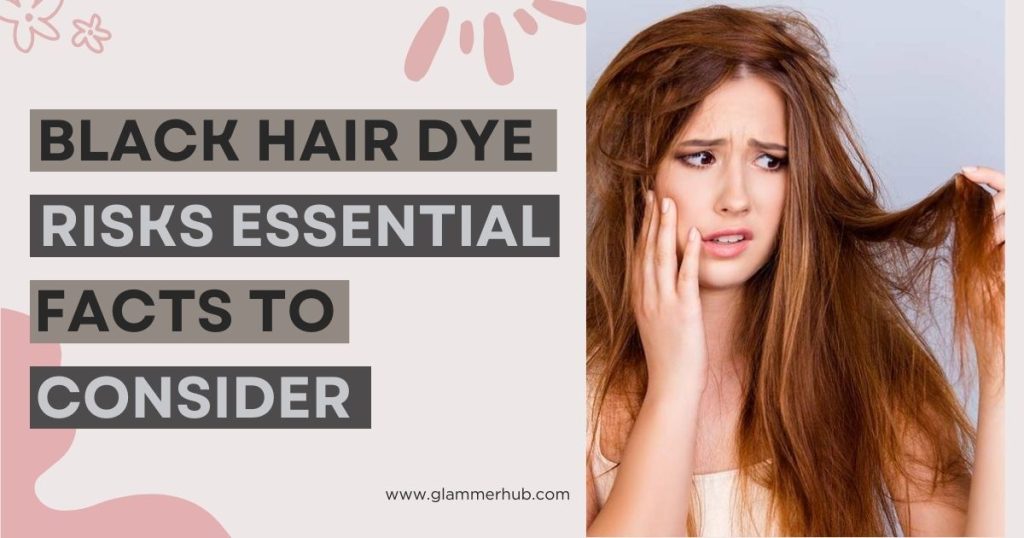
While dyeing hair black can be bold and stylish, it’s essential to be aware of this practice’s potential disadvantages and risks.
Black Hair Color Maintenance: Is It Budget-Friendly?
Maintaining a vivid black hair colour can be costly, especially if touch-ups are frequently required due to rapid regrowth or fading. Professional salon services, high-quality dyes, and specialized hair care products can add up quickly, straining your budget over time.
Tackling Black Hair Dye Removal Health Considerations
Removing black hair dye can be daunting, especially if you wish to return to your natural hair colour or try a different shade. The process often involves harsh bleaching or stripping agents, which can further compromise the hair’s integrity and lead to excessive dryness, breakage, and split ends.
Managing Eyebrow Color Mismatch Tips for Harmony
One commonly overlooked aspect of dyeing hair black is the potential for eyebrow mismatching. If not addressed properly, black hair can make lighter eyebrows appear more prominent, creating an unnatural and disjointed appearance. To avoid this, consider tinting your eyebrows or using eyebrow makeup to harmonize the overall look.
Beating Allergies Black Hair Dye Symptoms & Prevention
Allergic reactions to hair dye are a genuine concern, and black dyes have been known to trigger more severe reactions due to their potent chemical composition. In extreme cases, symptoms can range from mild skin irritation to severe swelling, rashes, and anaphylaxis. Conducting a patch test before each application and being aware of your body’s reaction is crucial for safe hair colouring.
Decoding Hair Dye & Cancer Fact vs. Fiction
While studies have investigated a potential link between hair dye and an increased risk of certain cancers, the evidence remains inconclusive and conflicting. It’s essential to consult with healthcare professionals and rely on reputable sources when assessing the risks specific to your situation.
Black Hair Dye Benefits Pros & Cons Explored
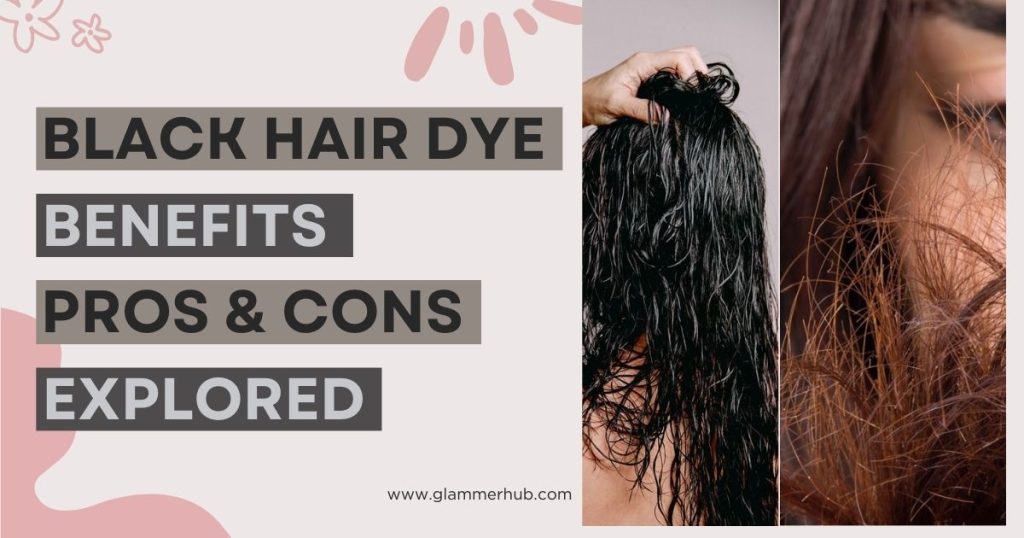
Despite the potential disadvantages, dyeing hair black can offer several advantages that shouldn’t be overlooked.
Bold and Striking Appearance: Black hair exudes a confident and striking presence, making it a popular choice for those who want to make a statement.
Versatility: Black hair can complement a wide range of skin tones and styles, making it a versatile option.
Coverage for Gray Hair: The black dye can provide an effective solution for individuals dealing with premature greying or seeking to cover stubborn grey strands.
Enhancing Certain Features: In some cases, black hair can enhance facial features and accentuate eye colour, creating a striking contrast.
Ultimately, the decision to dye your hair black should be based on carefully considering both the advantages and potential risks, considering your hair condition, lifestyle, and preferences.
Expert Tips for Dyeing Hair with Minimal Damage

If you’ve weighed the pros and cons and decided to embrace the allure of black hair, there are several steps you can take to minimize the risk of damage and ensure a successful, long-lasting result.
- Invest in High-Quality Hair Dye: Opt for professional-grade hair dyes containing nourishing ingredients formulated to minimize damage. Avoid harsh, ammonia-based dyes whenever possible.
- Conduct a Strand Test: Before committing to a full application, perform a strand test to assess your hair’s reaction to the dye and identify potential allergies or sensitivities.
- Prepare Your Hair: Ensure your hair is in optimal condition before dyeing. Use deep conditioning treatments, avoid excessive heat styling, and trim split ends to minimize damage.
- Follow Instructions Carefully: Adhere strictly to the dye manufacturer’s instructions, paying close attention to recommended processing times and mixing ratios.
- Limit Exposure Time: Minimize the time the dye remains on your hair, especially for touch-ups or root applications, to reduce potential damage.
- Use Protective Products: Invest in high-quality hair care products specifically designed for color-treated hair, including hydrating masks, leave-in conditioners, and heat protectants.
- Seek Professional Assistance: Consider visiting a reputable hair stylist or colourist, especially for your initial black dye application. Professionals have the expertise and experience to achieve optimal results while minimizing damage.
- Allow Adequate Time Between Touch-ups: Avoid frequent touch-ups, which can compound the damage over time. Space out your colour appointments to give your hair a chance to recover and regain strength.
By following these expert tips and recommendations, you can enjoy black hair’s bold and beautiful look while minimizing the potential risks and maintaining healthy, vibrant locks.
Discovering Natural & Semi-Permanent Black Hair Dye Alternatives
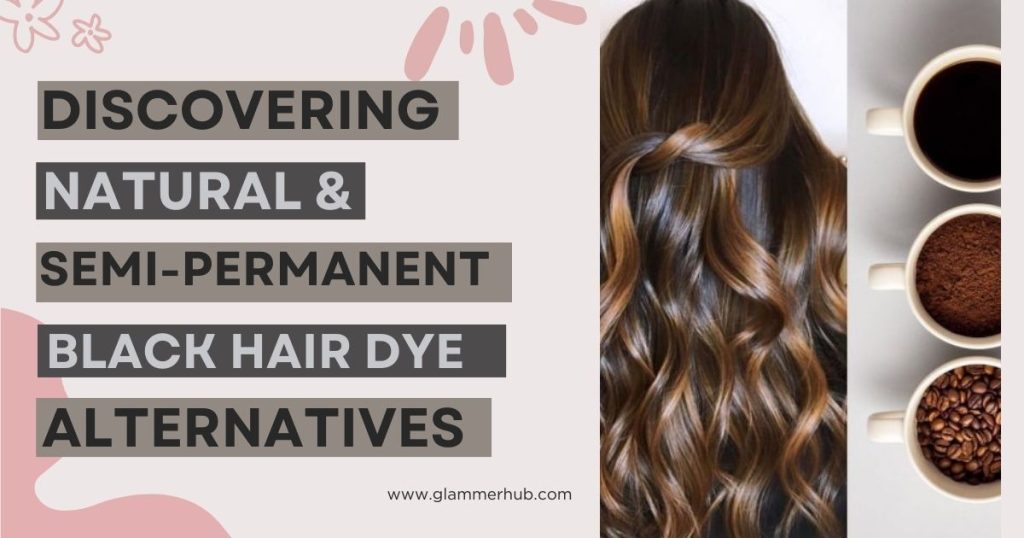
There are alternative options worth exploring for those seeking a more gentle approach or concerned about the potential risks of permanent black hair dye.
Embrace Natural Dyes: Safe & Sustainable Hair Coloring
Natural dyes derived from plant-based sources, such as henna, indigo, and coffee, offer a safer and eco-friendly alternative to traditional chemical dyes. These natural ingredients can provide rich, long-lasting colours while nourishing and strengthening the hair.
| Natural Dye | Source | Hair Color Achieved |
| Henna | Lawsonia inermis plant | Reddish-brown to auburn shades |
| Indigo | Indigofera tinctoria plant | Deep blue-black shades |
| Coffee | Coffee beans | Rich brown to dark brown shades |
While natural dyes may require more frequent touch-ups and can be less vibrant than chemical dyes, they offer a safer and more sustainable option for those seeking a gentler approach to hair colouring.
Choosing Hair Dye Semi-permanent vs Permanent Safety
Another alternative to traditional permanent black hair dye is semi-permanent or demi-permanent colour. These dyes are designed to gradually fade over time, typically lasting 4-8 weeks, and are less damaging to the hair structure.
Comparing Semi-Permanent and Permanent Black Hair Dyes:
| Factor | Semi-Permanent | Permanent |
| Longevity | 4-8 weeks | 6-8 weeks (with proper maintenance) |
| Damage Potential | Lower | Higher |
| Colour Vibrancy | Less intense | More intense |
| Application Process | Gentler, no developer required | More complex, developer required |
While semi-permanent dyes may not provide the same intensity and longevity as permanent dyes, they offer a safer option for those concerned about hair health or seeking a temporary colour change.
You may like;
How to Figure Out Hair Type A Ultimate Guide
Toner Turned My Blonde Hair Brown Causes and Solutions
How to Fade Purple Hair to Silver A Step-by-Step Guide
Hair After Toner Washes Out What You Need to Know
FAQs
- Does black hair dye always cause severe damage?
No, proper precautions and high-quality dye can minimize the risk of damage.
- Are natural or ammonia-free dyes completely safe for hair?
While gentler, they can still cause some damage, especially with prolonged use.
- How can I minimize damage when dyeing hair black?
Invest in high-quality dye, conduct a strand test, and follow instructions carefully.
- What are the benefits of semi-permanent black hair dye?
Semi-permanent dyes offer less damage potential and a temporary colour change option.
- Is there a safer alternative to permanent black hair dye?
Natural dyes derived from plants or semi-permanent dyes offer gentler options.
Final Thoughts
The decision to dye your hair black is a personal choice that should be made with careful consideration and awareness of the potential risks and benefits. By understanding the science behind hair dye and its effects on hair health, exploring alternative options, and following expert advice, you can make an informed decision that aligns with your preferences and priorities.
Remember, healthy hair is the foundation for a stunning, long-lasting colour. Embrace a proactive approach to hair care, consult with professionals when necessary, and prioritize your overall hair health and well-being. With the right knowledge and precautions, you can confidently embrace black hair’s bold and beautiful look while minimizing the risk of damage.
Thank you for your precious time spent with Glammerhub

